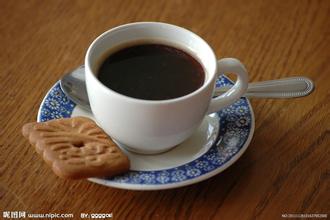Flavor description of Ethiopian Yejia Snow Coffee beans introduction of varieties produced by taste treatment
Ethiopian Yerga Coffee Bean Flavor Description Taste Treatment Method Area Variety Introduction
Coffee is Ethiopia's most important export cash crop and the main source of foreign exchange earnings. Ethiopia's coffee exports account for about 3% of the world market share, making it the eighth largest coffee exporter in the world. Coffee exports increased steadily from 58,000 tons in 1990-1991 to 110,000 tons in 1995 - 1996 and remained at that level for the next few years. Export volume exceeded 110,000 tons in 2001 - 2002 and reached 127,000 tons in 2002 - 2003. The decade-long decline in coffee prices on the international market has seriously affected Ethiopia's foreign exchange earnings. Coffee exports accounted for more than half of Ethiopia's foreign exchange earnings before coffee prices dropped sharply, but now they account for only about 35 percent. However, coffee prices began to recover in 2002, rising from 41 cents per pound in September 2001 to 52 cents per pound in 2002 and 59.7 cents per pound in 2003, according to the International Coffee Organization. The average price in March 2004 was 60.8 cents per pound, a 50 per cent increase from September 2001. This is great news for Ethiopia.
Ethiopia's Yirgacheffe coffee is one of the most unique coffee beans in the world today: it has a strong floral aroma, lemon aroma, rich acid but soft and pleasant taste.
Like Suzhou's small family jasper, although petite, but gentle and delicate, sweet and pleasant, without any decoration can attract thousands of love. Medium-roasted yeggar coffee has a distinctive lemon, floral and honey-like sweet aroma, soft fruit acids and citrus flavors, fresh and bright taste.
Ethiopia's Yirgacheffe coffee is petite, but gentle and sweet. As the home of coffee, Ethiopia's millennia of growing and processing traditions have resulted in high-quality washed Arabica beans. Light baked with unique lemon, floral and honey sweet aromas, soft fruit acids and citrus notes, fresh and bright taste. No milk, no sugar, let the rich texture and unique soft floral brush your taste buds, leaving endless aftertaste…
Yegashefi is a small town, 700-2100 meters above sea level, synonymous with Ethiopian fine coffee. It is a wetland since ancient times, and the old saying "Yirga" means "settle down" and "Cheffe" means "wetland". The way coffee is produced and the flavor is so prominent that Ethiopian coffee farmers compete to be proud of their coffee with Yegashfi flavor, and become the most famous coffee producing area in Africa.
In Ethiopia, coffee classification and quality control systems are divided into producer, regional and national levels. All coffees are inspected by local inspection agencies before they leave the country of origin, and then re-inspected at coffee inspection and grading centres in Addis and Diredova to determine their quality grade. Grading coffee before auction and sale is important for all groups involved in production, acquisition, export and consumption. Before export, coffee must also be sent to a national quality control agency for inspection to confirm that origin, color, etc. meet export standards to ensure the reputation of Ethiopian coffee

Important Notice :
前街咖啡 FrontStreet Coffee has moved to new addredd:
FrontStreet Coffee Address: 315,Donghua East Road,GuangZhou
Tel:020 38364473
- Prev

Flavor description of Panamanian Flower Butterfly Coffee introduction to the method of taste treatment of varieties produced by grinding scale
Panamanian Flower Butterfly Coffee Flavor description Grinding scale producing area Variety Taste treatment method introduction to Pokuite producing area there are also many excellent manors, except the famous Emerald Manor and Alida Manor. Aqaba Manor and so on are all famous manors, all of which produce high-quality boutique coffee. And this is not only due to the superior ecological conditions of the Pokut region of Panama and the Baru fire.
- Next

Introduction to the description of Manor Flavor of Mandarin Coffee in Indonesia
Manning coffee is considered to be the most mellow coffee in the world. When tasting Mantenin, you can feel the obvious lubrication on the tip of the tongue. At the same time, it has a low acidity, but this acidity can also be obviously tasted. The leaping micro-acid is mixed with the richest aroma, so you can easily feel the temperature.
Related
- Detailed explanation of Jadeite planting Land in Panamanian Jadeite Manor introduction to the grading system of Jadeite competitive bidding, Red bid, Green bid and Rose Summer
- Story of Coffee planting in Brenka region of Costa Rica Stonehenge Manor anaerobic heavy honey treatment of flavor mouth
- What's on the barrel of Blue Mountain Coffee beans?
- Can American coffee also pull flowers? How to use hot American style to pull out a good-looking pattern?
- Can you make a cold extract with coffee beans? What is the right proportion for cold-extracted coffee formula?
- Indonesian PWN Gold Mandrine Coffee Origin Features Flavor How to Chong? Mandolin coffee is American.
- A brief introduction to the flavor characteristics of Brazilian yellow bourbon coffee beans
- What is the effect of different water quality on the flavor of cold-extracted coffee? What kind of water is best for brewing coffee?
- Why do you think of Rose Summer whenever you mention Panamanian coffee?
- Introduction to the characteristics of authentic blue mountain coffee bean producing areas? What is the CIB Coffee Authority in Jamaica?

